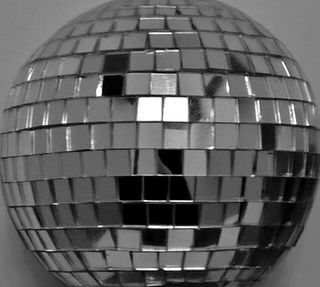Health
Boogie Your Way to Better Mental Health
Gay men have known for decades that dancing and dance music are healing.
Posted December 10, 2018
Why do so many gay men love dance music and dancing—to the point of stereotype—when there’s another common stereotype that alleges “real” men don’t dance?
For starters: It’s good for our mental health. Dancing is known to release endorphins in our brains and lift our mood. It can relieve anxiety. It can help stimulate neuron growth. Studies suggest dancing is even good for people with dementia.
What’s not to like about all those positive benefits?
Millions of people across the world in the latter half of the 1970s certainly liked them when, for a few years anyway, disco music took over the pop charts and popular culture.
The year soon ending has marked the 40th anniversary of the hottest year in dance music history, 1978, when disco music ruled the airwaves. That year, and for a couple more years, we couldn’t get enough of the “beat for the feet.”
Gay men were boogieing to the disco beat long before “disco” began to rock the world in the mid-1970s. In fact, it was in the gay bars and clubs where the fusion of black rhythm and blues and Latin music began its crossover from the discos to the popular culture. It was also in gay venues that disco-style dance music continued to be played, and loved, long after the disco fad passed—right on down to the present.
When I wrote my 2001 book, Hot Stuff: A Brief History of Disco, in the late 1990s, disco music and even the “disco look” were being revived. Cher was reviving her career (again) with “Believe” and other dance tunes. Saturday Night Fever was adapted to the Broadway stage.
Some of my research for the book entailed traveling to Provincetown, Mass., the town at the tip of Cape Cod long popular with LGBTQ people because of its ambiance of acceptance and revelry. There, on every summer day for decades, the Boatslip has hosted a hugely popular afternoon tea dance where LGBTQ people, especially gay men, from all over the country (and world) meet, mingle, drink, and dance.
For Labor Day 1999—the last big blowout of the summer and the 20th century, and already two decades after the 1979 “disco demolition” that began to topple disco from its perch atop the pop charts—the Boatslip’s dance mix included two of Whitney Houston’s popular dance tracks, “It’s Not Right” and “My Love Is Your Love”; Donna Summer’s “I Will Go With You” off her just-released Live and More: Encore!; Taylor Dayne’s “Naked Without You”; Vicki Sue Robinson’s “Move On”; Barbara Pennington’s “24 Hours A Day”; the Abba retro group Abbacadabra’s “SOS”; and, to close, Donna Summer’s “Last Dance.”
Diva-centric, for sure, but no surprise there: Gay men have long adored divas—women whose style and sassiness offer instruction on how to love and stay sane while dealing with men. More than that, though, are the words these divas sing—and the simple fact of lyrics. That alone is different from much of what is played in dance venues these days with its heavy emphasis on electronic sound.
Will Moppert, a former new-waver, ran the Boatslip’s music shop at the time I was writing Hot Stuff. He told me that most people coming into the shop wanted dance music with a vocal track, and very few wanted techno-style music. “I think it’s a gay/straight thing,” he said. “Gay men want happy music, fluffy music. Straight people only listen to club music when they go out dancing, whereas gay men have it in their cars, in their homes, it’s part of their lifestyle.”
But sexual orientation alone may not explain the reason these men enjoy dance music with words. “I think straight people like the vocals as much,” said Maryalice Kalaghan, the Boatslip’s longtime deejay. “But the older anyone gets, the more they want the song.”
Whether it’s because they grow to like the vocals, because they enjoy a more human touch, or simply because the gay clubs where they dance have always nurtured divas and their songs, many gay men remained loyal to the disco divas and their brand of vocal dance music long after the “mainstream” moved on.
Like probably most of my age peers, I don’t go out dancing as I did up until my early 40s. But like many other gay men “of a certain age,” I still listen to dance music, especially in my car. I love to crank up the volume on Sirius radio’s Utopia dance music channel. Before long I’m tapping my fingers and feet, my mood brightening with each tap.

Guess what? It works.
Even without dancing per se, dance music alone can help lighten the day’s burdens. Back in the '70s, it helped the world get through some very dark times—including Vietnam, Watergate, double-digit "stagflation," gas lines, and a feeling of unease that led many to rely on pharmaceuticals of one sort or another.
Fortunately, this therapy doesn’t require drugs. It costs nothing. And its best known and most common side effect is a crazy and irresistible compulsion to shake your booty.
Sometimes that’s just what the doctor ordered, and all it takes.




